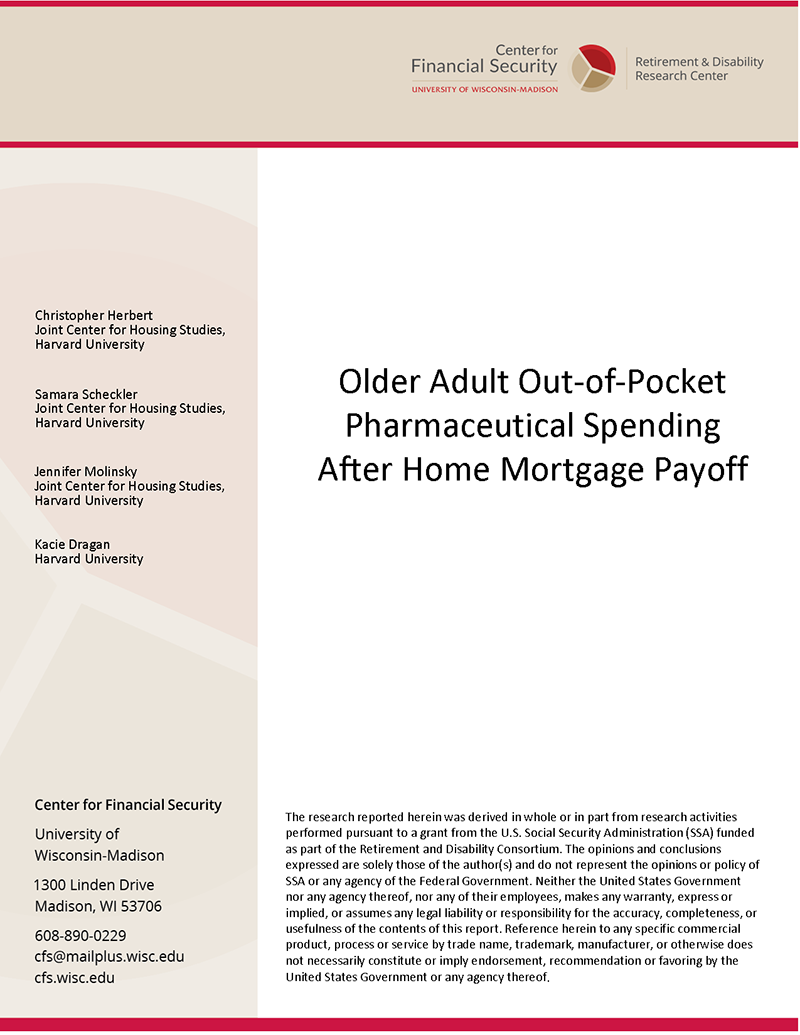Health Spending Among Older Adults Before and After Mortgage Payoff
Older adult homeowners increasingly carry mortgage debt into retirement. The share of homeowners aged 65 and older with outstanding mortgages doubled between 1989 and 2016, while the outstanding loan to value ratio tripled from 13 to 39 percent over the same period. Mortgage debt is associated with housing cost burden (housing cost exceeding 30 percent of income) which constrains resources available to fund other priorities including out-of-pocket healthcare. As housing costs rise, households spend less on healthcare, food, transportation, and other necessities, which may have serious implications for older adults’ wellbeing. Older adults living with poor health and low-income especially struggle to meet these expenses. However, the removal of debt payments may act as a cash infusion allowing older adults to spend more on healthcare and supportive services once their mortgage has been paid off. As part of a broader research agenda exploring links between mortgage debt, older adult welfare and equity, this research identifies changes in out-of-pocket health care spending around the time of mortgage payoff. It also describes a typology of older adult mortgage-debt holders. This project relies on the US Health and Retirement Study (HRS), a rich longitudinal panel survey, to fill-in gaps in the literature around household spending changes at mortgage payoff and the relationship between mortgage debt and health expenditures.

